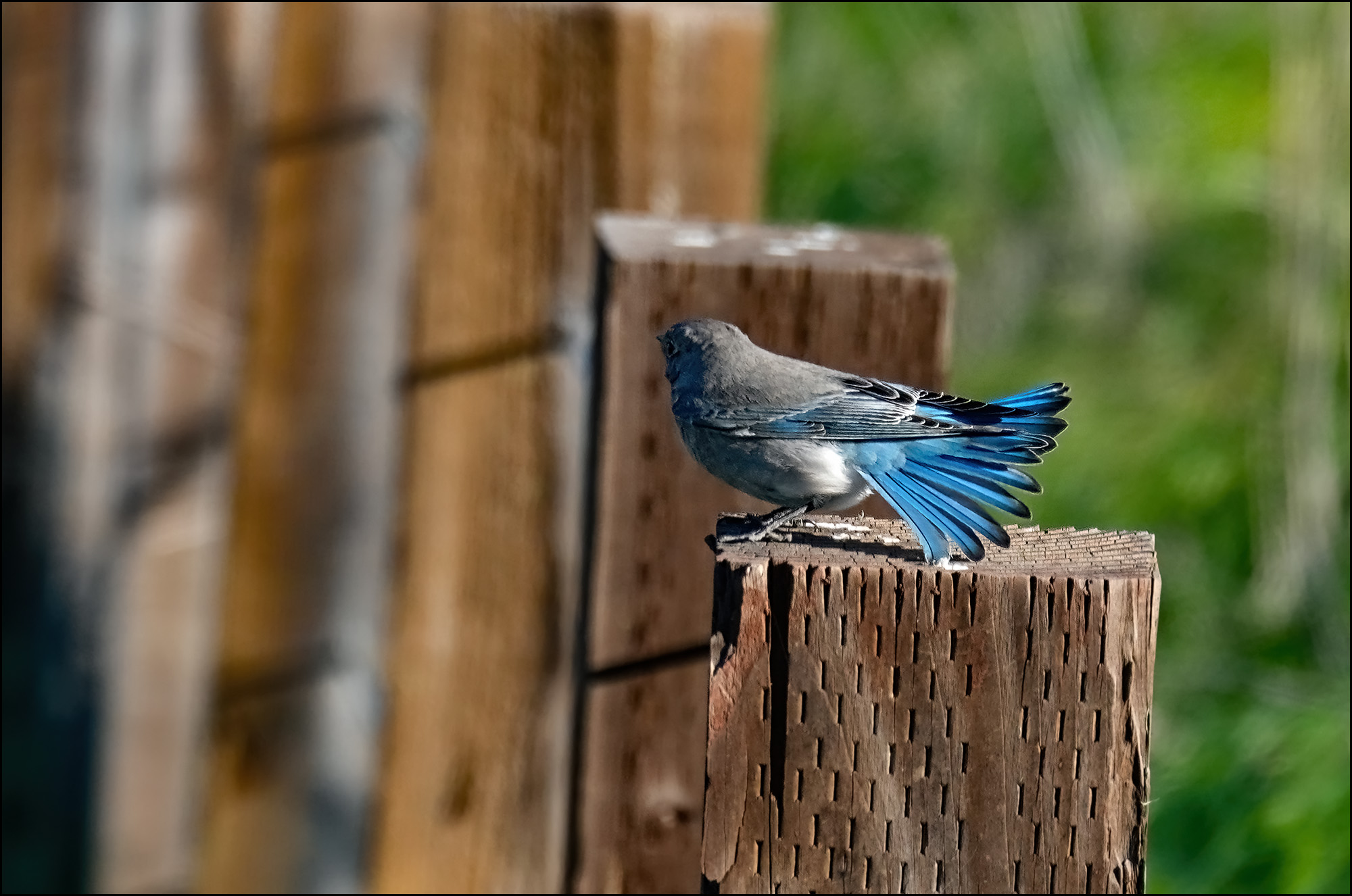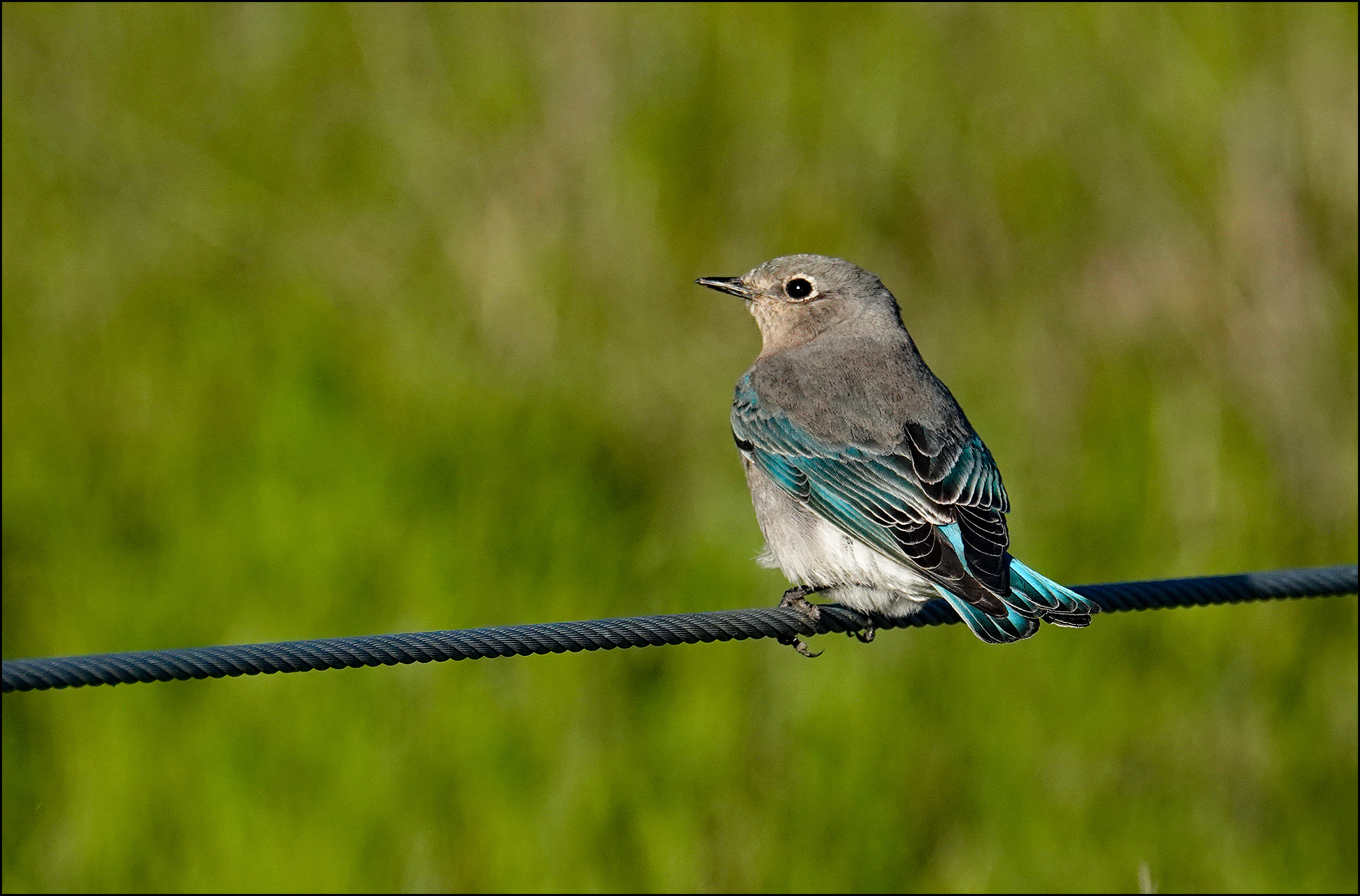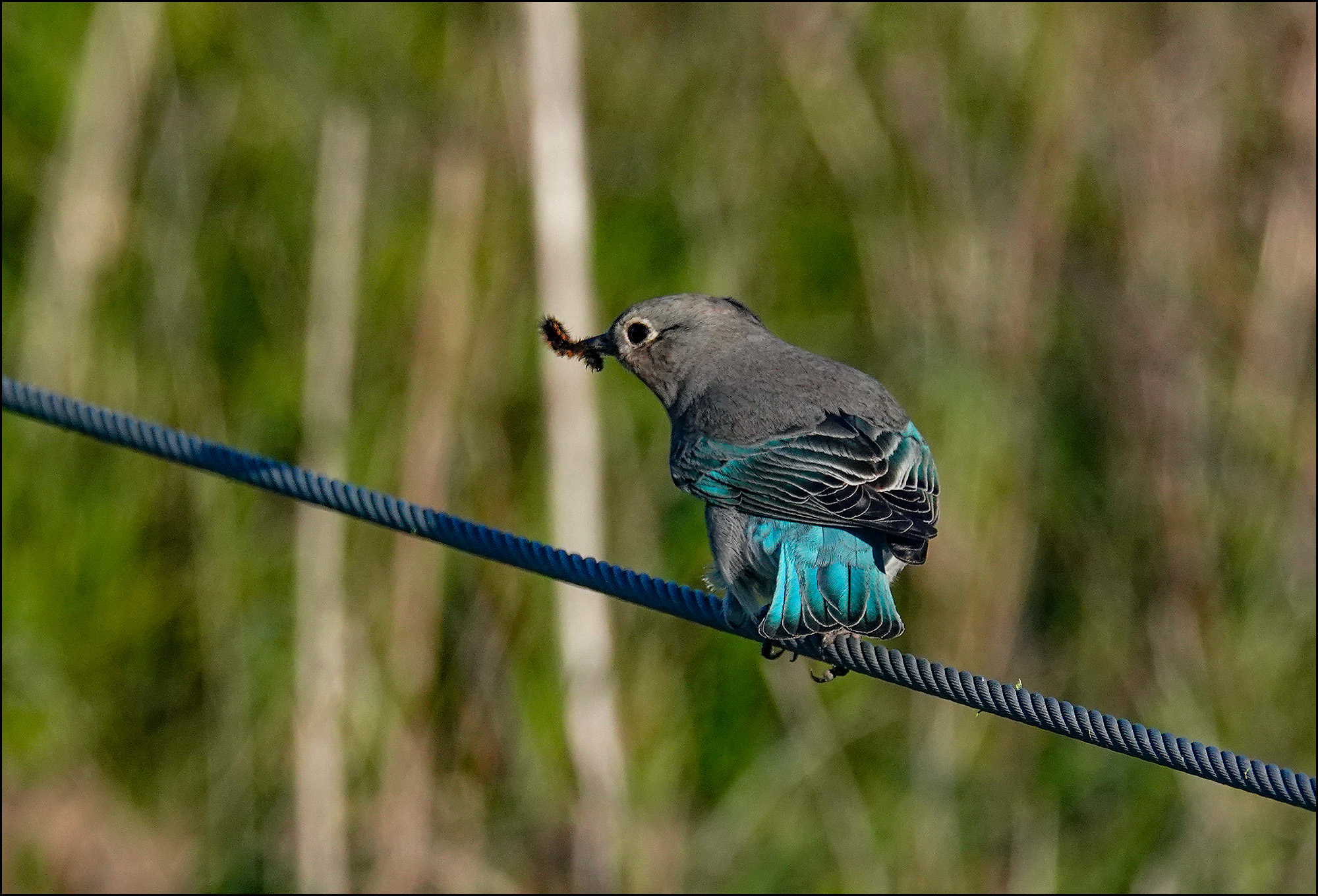According to my bird buddy, this is a lazuli bunting female Mountain Bluebird. I found her hopping around the trail markers at Quail Hill park, one of the open-space preserves in this neck of Orange County.
The top photo is a good overall picture of our little bluebird. The middle picture shows that it's not only the early bird who gets the worm. And the bottom picture shows her displaying her plumage.
(I'm not sure why her feathers are teal in the first two photos and blue in the bottom one. It's not my doing. Maybe the light changed? The teal coloring shows up in every frame taken after 3:32 pm.)
UPDATE: Steve_OH says it's a female Mountain Bluebird. So a Mountain Bluebird it is. Also, there are several theories about the teal/blue color change being bandied about in comments.




That is a bluebird, not a Lazuli Bunting. From the looks of it, it's a female Mountain Bluebird, but I can't absolutely rule out Western Bluebird without a better look.
Mountain Bluebirds are a rarity in coastal California, but there has been a recent influx, with sightings in Fairview Park and Upper Newport Bay Nature Preserve within the last couple of weeks. Western Bluebirds, on the other hand, are common in any open area with trees nearby.
Lazuli Buntings have a much more conical bill, with a very chunky lower mandible, giving them a sort of "underbite" look. They also have white wingbars (although the wingbars may be unnoticeable in young females).
As for the color shift, that is probably related to the fact that digital cameras always have trouble with violets, and blues that are close to violet.
Female immature western bluebird?? The immature male and female lazuli bunting look like Kevin's photo. Hard to tell the difference.
Compare:
Shape of bill - Look carefully at the shape of the bunting bill. Stout, with a lower mandible that bulges outwards, wider than the upper. The lower mandible is usually slightly paler than the upper as well. A bluebird's bill is much narrower and flatter; the lower mandible is often hard to see in photos.
Eye ring - Note that the bird in Kevin's photos has a well-defined white eye ring, which is characteristic of female bluebirds. Lazuli Buntings don't have white eye rings, although you can sometimes barely see a hint of an eye ring in a very young female.
Wing bars - In most plumages, Lazuli Buntings have two white wing bars, with the upper bar wider than the lower. In females, the wing bars tend to be a pale tan rather than white. In very young females, the wing bars may be indistinct. However, a very young female would not have any blue feathers.
Wing/tail length - Notice how the tips of the wings of the bird in Kevin's photos reach over halfway down the tail. Now look at a Lazuli Bunting; its wings reach only to the base of the tail.
About 10 years ago I was in Panama and was trying to photograph some flowers I thought were pretty. Unfortunately my pictures kept coming out with blue flowers instead of the purple flowers I tried to photograph. I found this web site which kind of explained things and offered a fix:
https://wickeddarkphotography.com/2012/03/25/the-color-purple-and-the-digital-camera/
Start making more money weekly. This is valuable part time work for everyone. The best part ,work from the comfort of your house and get paid from $10k-$20k each week . Start today and have your first cash at the end of this week. Visit this article
for more details... https://createmaxwealth.blogspot.com
OT: Couldn’t help remarking on the quote that happened to rotate in for this photo (beautiful, BTW): Every gun that is made, every warship launched, every rocket fired, signifies in the final sense a theft from those who hunger and are not fed, those who are cold and are not clothed. —Dwight D. Eisenhower. How great that is from a Republican. Those were the days.
Bald eagle….
Maybe something to do with structural coloration and the change in viewing angle as the sun went down. https://academy.allaboutbirds.org/how-birds-make-colorful-feathers/ Scroll down to the hummingbird illustration.
We have indigo buntings in the Midwest.
They look as blue as blue can be but are actually black.
Something about how the light reflects off of their feathers or something like that…..
“Believe it or not, adult male indigo buntings in full breeding plumage are covered in black feathers, but thanks to the diffraction of light by the feather structure, they appear to be a brilliant blue, a colour that changes from black to blue to turquoise as the angle of reflected light changes.”
There is a thing with many birds, their feathers only reflect certain color spectrums. This bird's feathers are not blue, they reflect only that blue spectrum of light.
https://academy.allaboutbirds.org/how-birds-make-colorful-feathers/
Yep. Growing up in Boston we didn't have magpies. At least not in my neck of the woods. But they're all over the place in Beijing. I think they're beautiful, personally. And sometimes they appear to be blue-ish in color. And at other times dark gray, almost black. Depends on the light.
Yeah, mountain bluebird. I've seen their blue almost disappear on overcast days, but not a color change like that; and I notice the greens don't seem to change with the blues. No clue, but the violet/digital idea sounds believable.
Threw that first image into google reverse image search and it returned identification of mountain bluebird.
Pingback: Lunchtime Photo – Kevin Drum